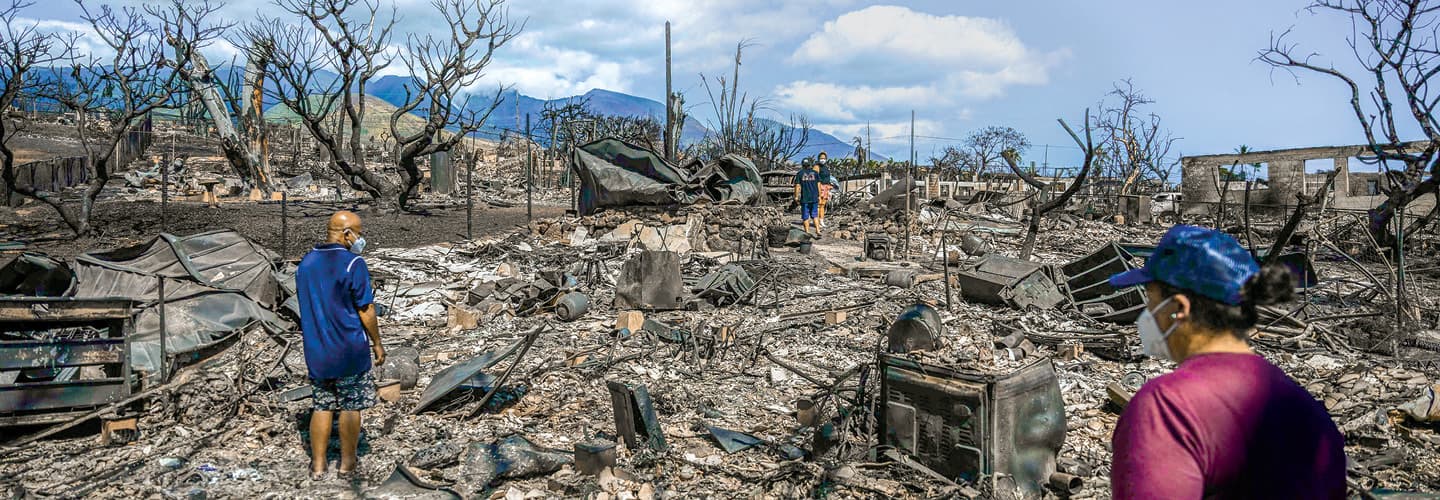Jim McMahon
Disaster struck the Hawaiian island of Maui in August. The deadliest U.S. wildfires in more than a century swept through parts of the island, devastating the town of Lahaina, once Hawaii’s royal capital. At press time, at least 115 people had been killed, hundreds were still missing, and more than 2,200 structures—mostly homes and businesses—were damaged or destroyed. Some people ran into the ocean to avoid the heat and flames. No single cause of the fire had yet been determined, but experts speculate that active power lines fell in high winds and ignited a wildfire. Worsening drought conditions and rising temperatures caused by climate change likely also contributed. Along with mourning the dead, residents now face the daunting task of rebuilding their lives in the state with the highest cost of living. Maui officials estimated that rebuilding the town will cost $5.52 billion. But with many homes and irreplaceable relics left in charred ruins, some fear it won’t be possible to regain what’s been lost. “It’s so, so sad. I love this place,” says Felina De La Cruz, whose home was destroyed. “I want to live here. But I don’t know.”

